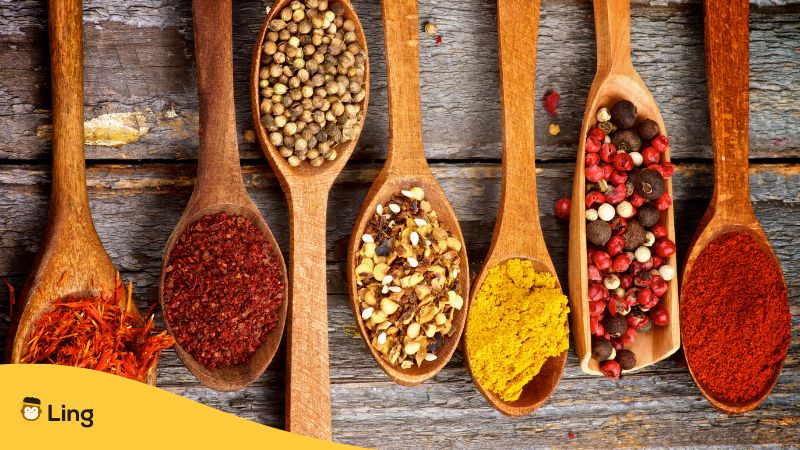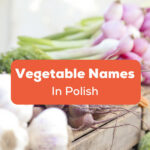Hej! Have you ever felt like going on a gastronomical globetrot? Or are you simply smitten by foreign languages and looking to add a dash of culture to your linguistic plate? Well, buckle up, fellow food and language enthusiasts, because we are about to embark on an appetite-whetting adventure, exploring the easiest words for flavors in Danish!
Yes, that’s right! The fascinating Nordic nation of Denmark isn’t just famous for Vikings, fairy tales, and beautiful architecture – it’s also a mouthwatering haven for food lovers. And in order to truly appreciate and savor the Danish cuisine, one must first learn the key flavor vocabulary that’ll transform an ordinary conversation about food into a smörgåsbord of delicious words.
So prepare your taste buds and your gray matter alike, as we equip you with delectable Danish words for flavors that will not only make your mealtime chatter more captivating but will also leave your friends in awe of your newfound linguistic prowess.

Flavors In Danish
The word “Flavor” translates to “Smag” in Danish. It’s a term you’ll experience everywhere, from gourmet kitchens in Copenhagen to cozy family homes in Aarhus. It isn’t just about the taste on your tongue but the sensation that floods your senses when each note of aroma, sweetness, bitterness, or spice hits. “Smag” is the essence, the culinary soul of any Danish dish.
While a plural version of “Smag” or “Aroma” might not be commonly used, the plural of “Flavors” can be termed as “Smagsoplevelser”, which could translate to “Taste experiences” in English. It implies experiencing a variety of flavors, making your taste buds dance to the rhythm of Danish cuisine.
Ready to learn more about the natural flavors in the Danish language? Read on below!
1. Sweet: Sød
Craving a Danish “kanelsnegl” (cinnamon roll)? Your craving is calling for something sød (pronounced sooth) – the Danish term for sweet. To quell the sweetness, just polish off a pastry and, voila, you’ve embraced the sød side.
The dictionary may list it as just another adjective, but any Danish sweet-tooth connoisseur will agree, sød is much more than that. It’s not merely the taste of sugar dancing on your tongue, it’s the joyful feeling that fills you when biting into a traditional Danish pastry or the comfort of a warm cocoa on a cold winter’s evening.
Here are some examples of Danish food that features this flavor:
- Danish Pastries (Wienerbrød)
- Chocolate-coated marshmallow (Flødeboller)
- Sweet stew (Rødgrød med Fløde)
2. Sour: Sur
If sugar-sweet was a dreamy fairytale, then welcome to the more adventurous ride on the flavor roller coaster – the world of sur (pronounced soor) or sour in Danish. Adventurous because a sur can make your eyes squint, your lips pucker up and set your tongue on a dazzling tangy dance! It’s the balance to sweet, the flavor that adds that little zing to your dishes and drinks. So, buckle up and let us take a dive into the zesty pool of sur.
Here are the best examples of Danish treats that feature this flavor:
- Traditional red cabbage (Rødkaal)
- Lemon water (Citronvand)
- Pickled herring (Sild)
3. Salty: Salt
This might make you do a double-take at your screen – salt in Danish IS salty. Yes, you read it right and no, it’s not a typo. But why change what is already perfect, right? So next time you are sprinkling salt on those friske kartofler (fresh potatoes), you’re enriching your dish and your Danish vocabulary. Two birds with one stone, if you ask us.
Here are the best examples of Danish delights that feature this flavor:
- Danish-style boiled potatoes (Kartofler)
- Pork-meat terrine (Sylte)
- Salty licorice (Salt lakrids)
4. Bitter: Bitter
That morning cup of joe that gives you a lift? Yes, it can be bitter in more ways than one if it’s strong coffee. That’s right; ‘bitter’ is the same in Danish and English – much like a cup of strong, black coffee that unites people across languages.
Here are some of the Danish delicacies that remind us of the word “bitter.”
- Beer (Øl)
- Dark rye bread (Rugbrød)
- Danish bitter dram (Gammel Dansk)
5. Spicy: Krydret/Stærk
Alright, brace yourself for this hot Danish duo. If you adore a good kick in your food, you’ll have to decide between krydret (pronounced kreed-reth) and stærk (pronounced stairg). While both imply spice, krydret leans more towards “spiced”, and stærk refers to “strong” or “hot” spice. Quite the fierce pair, eh?
Here are some Danish treats with this flavor profile you need to try out:
- Spicy curry (Karrysild)
- Traditional potato-based dish (Brændende Kærlighed)

Expressing Your Preferred Spice-O-Meter
Picture this: you’re finally sitting at that Danish restaurant you’ve been dying to try, but then a menu full of unfamiliar words stares back at you. You like a little spice to your food, but how do you communicate this? Well, fear not! Here’s your cheat sheet for specifying your spice preferences the Danish way:
1. Can I get it very spicy, please?
Who doesn’t love a culinary challenge? If you’re a spice champion, or you simply feel like a daring gastronomical adventure, use “Kan jeg få det meget krydret, tak?” which means, “Can I get it very spicy, please?”
2. Can it be not so spicy, please?
You love the dance of fiery flavors, but you’d rather not have your taste buds do a flaming tango, right? In that case, use “Kan det være ikke så krydret, tak?” which translates to “Can it be not so spicy, please?”
3. Can I get it mildly spicy, please?
Do you like just a hint of fire in your food without the full-blown heatwave? To get it just right in Danish, you ask, “Kan jeg få det let krydret, tak?” which means “, Can I get it mildly spicy, please?”
There you have it – a simple guide to navigating the spicy Scoville scale Danish style! Now, armed with these phrases, you’re all set to order your next Danish meal with the same confidence as a local. Happy feasting! (Or should we say “God appetit!”)
Learn Danish With Ling
Embark on a thrilling Nordic adventure and unlock the secrets of a fascinating language with Ling! With this educational resource, you’ll discover Danish lessons that are both engaging and informative, making mastering this Nordic language a breeze. So, what are you waiting for? Take the plunge and download Ling from the App Store or Play Store now! Watch in amazement as your language savvy impresses the Danes and captivates your fellow lingers.



































































